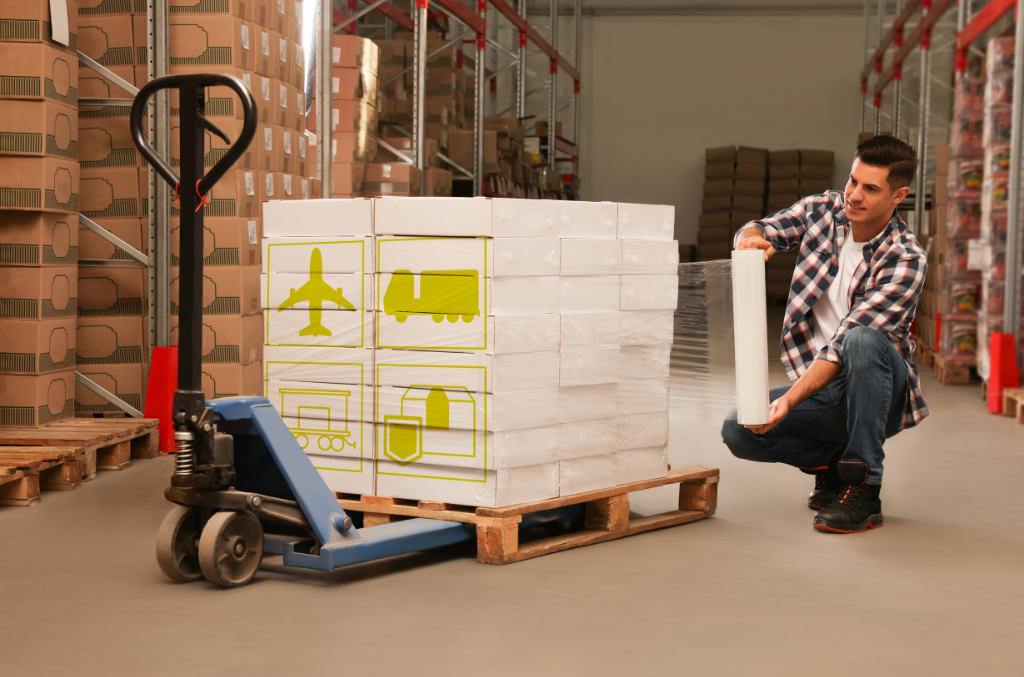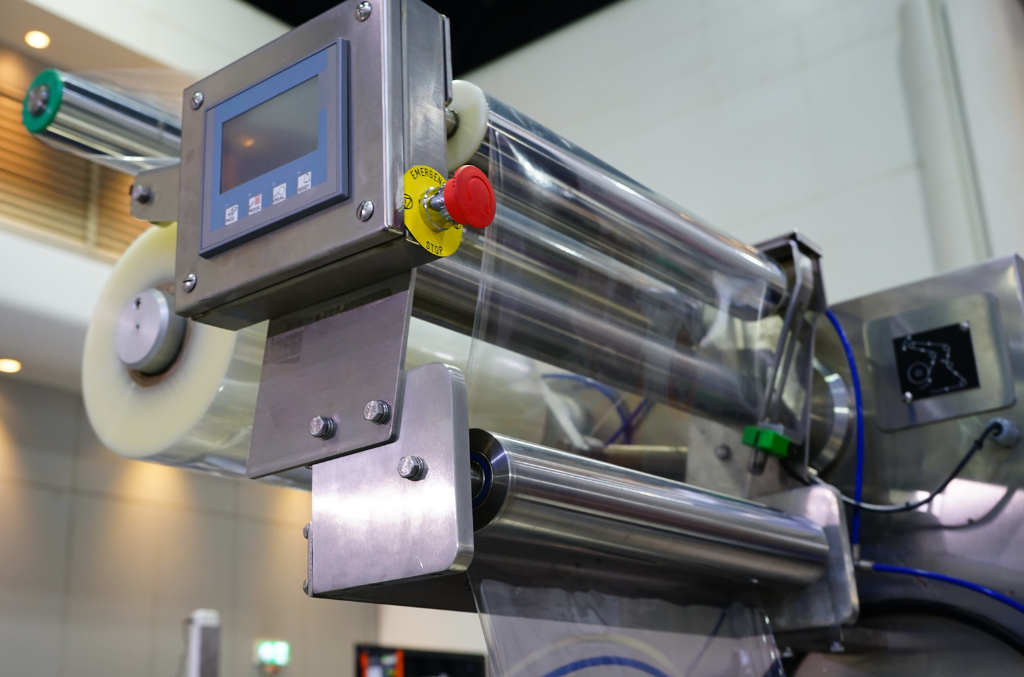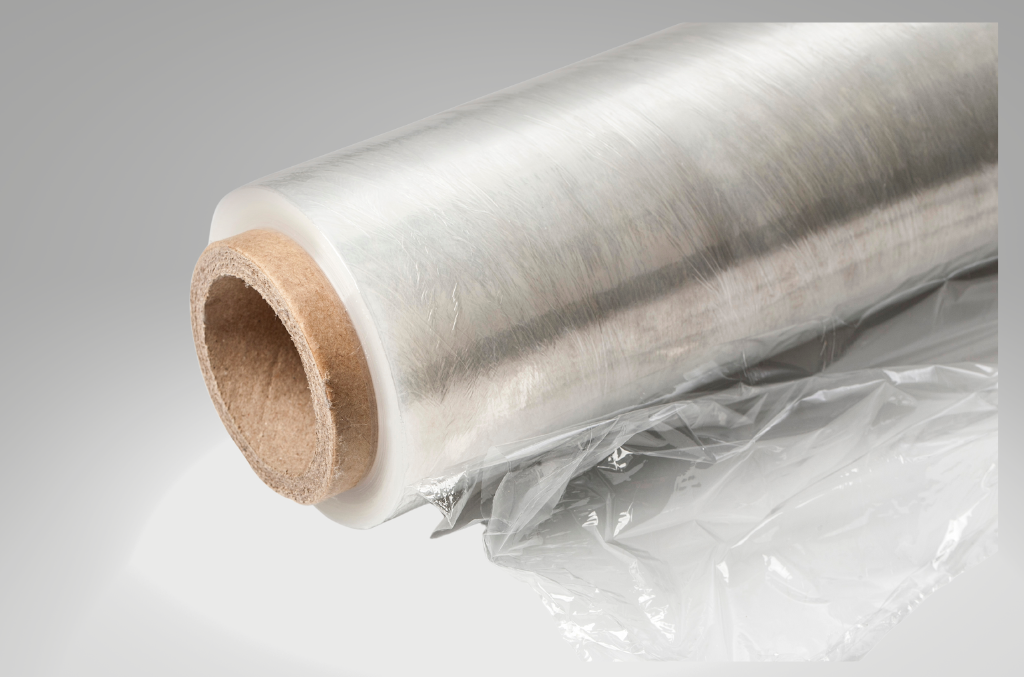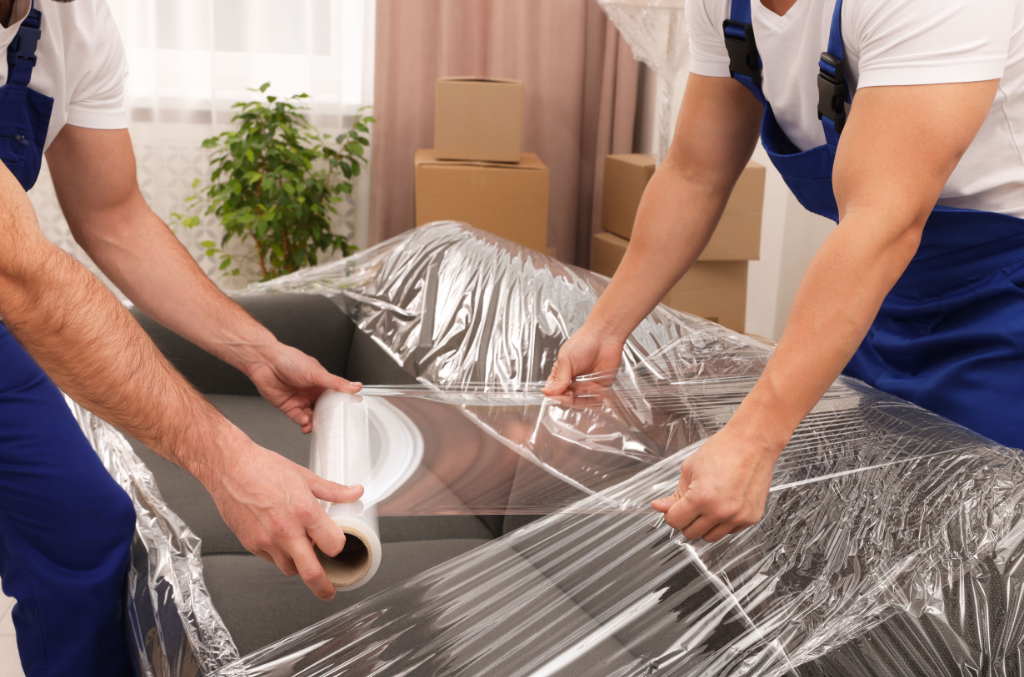Stretch Film
Unwrapping the Essentials: A Comprehensive Guide to Stretch Film
Stretch film, also known as pallet wrap or stretch wrap, is a highly stretchable plastic film made primarily from linear low-density polyethylene (LLDPE). It is widely used in the packaging industry to wrap products on pallets and secure them to each other and the pallet. This helps to reduce product loss, discourage load tampering, and protect from dirt, dust and moisture.
In This Article
Importance of Stretch Film in Packaging Industry

In the packaging industry, stretch films plays an indispensable role. It is designed to cling tightly to objects and provide a secure overwrap to protect them from shifting during transport. Furthermore, its elastic recovery keeps the items tightly bound and its transparent nature allows for easy product identification.
Stretch film is not just a packaging tool, it is a means to ensure product safety, enhance storage and transportation efficiency, and maintain product quality from the point of production to the point of sale. Its versatility and cost-effectiveness have made it a preferred choice for businesses in various industries, including manufacturing/distribution, healthcare, education and building services.
In the following sections, we will delve deeper into the different types of stretch films, their applications, how to choose the right one for your needs, and much more.
Understanding Different Types of Stretch Film
Hand Stretch Films
Hand stretch film is designed for easy application by hand. It is commonly used in lower volume packaging operations, or for special applications where a machine cannot be used. Hand stretch film is lightweight, portable, and doesn’t require any machinery for application, making it a versatile option for businesses of all sizes. It comes in various thicknesses and widths to suit different packaging needs.
Machine Stretch Films

For higher volume operations, machine stretch film is the ideal choice. It is designed to be applied with a machine, such as a turntable or a rotary arm stretch wrapper. This type of stretch film offers greater efficiency and consistency in load securing. It also allows for faster wrapping and can handle heavier loads compared to hand stretch film. Machine stretch films often comes in larger rolls and is typically more cost-effective for businesses with high-volume packaging needs.
Specialty Stretch Films
Beyond the standard hand and machine stretch films, there are also specialty stretch films designed for specific applications. For instance, UV stretch films protects products from sun damage, vented pallet wrap allows for the circulation of air around perishable products, and anti-static stretch films prevents static electricity build-up. These specialty films cater to unique packaging needs, ensuring that businesses can find a stretch films solution for virtually any application.
Understanding the differences among these types of stretch film is the first step in selecting the right one for your packaging needs. In the next sections, we will explore further the science behind stretch films, its industry applications, and how to choose the right stretch films for your needs.
The Science Behind Stretch Film
Material Composition of Stretch Films
Stretch films are primarily made from linear low-density polyethylene (LLDPE), a type of plastic that is known for its flexibility, resilience, and strength. The plastic is extruded or forced through a circular die to form a thin, continuous film. Additives are often included in the material composition to enhance certain properties such as clarity, tear resistance, and stretch ability.
The Manufacturing Process of Stretch Films
The manufacturing process of stretch films involves extrusion, where the LLDPE is melted and forced through a circular die to form a thin film. The film is then quickly cooled to solidify it. This is followed by the stretching process, where the film is heated and stretched to increase its elasticity and strength. The stretched film is then cooled and wound onto rolls.
How Stretch Films Works to Secure Loads
The science behind stretch films lies in its ability to recover its original size after being stretched. When the film is applied to a load, it is stretched around it. After application, the film tries to return to its original size, creating a force that “holds” the load together. This elastic recovery of the film keeps the items tightly bound, preventing movement during transport.
In the next sections, we will delve into the various industry applications of stretch film, how to choose the right one for your needs, and the proper usage and maintenance of stretch film. Stay tuned to continue unraveling the world of stretch film.
Industry Applications of Stretch Film
Role of Stretch Film in Manufacturing/Distribution

In the manufacturing and distribution sectors, stretch film is vital for securing goods for transport. It’s used to bundle products together, making them easier to manage and distribute. It also protects them from damage, dust, and moisture during transit. Thanks to its high load stability, stretch film reduces the risk of accidents in the warehouse or on the road.
Usage of Stretch Film in Healthcare
In the healthcare industry, stretch film is used to wrap and protect medical equipment and supplies. Its ability to create a tight seal helps keep medical items sterile, preventing contamination. Additionally, the clear nature of the film allows for easy identification and inspection of the contents without needing to unwrap them.
Importance of Stretch Film in Education Sector
Educational institutions use stretch film in various ways, from bundling books and supplies for storage or transport, to protecting equipment and furniture during moves or renovations. Its versatility and cost-effectiveness make it a practical solution for a wide range of applications.
Application of Stretch Film in Building Services
In building services, stretch film is used to wrap and protect materials and equipment on construction sites. It’s also used to bundle and secure items for disposal. The film’s durability and resistance to punctures and tears make it ideal for the rough and tough conditions of a construction site.
In the following sections, we’ll provide tips for choosing the right stretch film for your needs, discuss the proper usage and maintenance of stretch film, and explore the regulatory aspects of stretch film. Stay tuned to continue discovering the multifaceted world of stretch film.
Tips for Choosing the Right Stretch Film
Understanding Your Packaging Needs
The first step in choosing the right stretch film is understanding your specific packaging needs. Consider factors such as the type of products you’re wrapping, their weight, and how they’ll be transported and stored. For instance, heavy or sharp-edged items may require a thicker stretch film for added strength and puncture resistance.
Knowing the Differences Among Stretch Film Types
As mentioned earlier, stretch film comes in different types: hand, machine, and specialty. Hand stretch film is ideal for smaller operations or special applications, while machine stretch film is suited for high-volume packaging. Specialty stretch films cater to specific needs like UV protection or ventilation. Understanding these differences can help you choose the most suitable film for your needs.
Considering the Load Size and Weight
The size and weight of the load significantly influence the type of stretch film you should choose. Heavier and larger loads typically require a stronger, machine-grade stretch film. Conversely, lighter and smaller loads can be effectively secured with hand stretch film.
In the next sections, we will discuss the proper usage and maintenance of stretch film, the regulatory aspects of stretch film, and the different brands available in the market. Stay tuned to continue learning about the world of stretch film.
Proper Usage and Maintenance of Stretch Film
Correct Way to Apply Stretch Film
Proper application of stretch film is essential for maximizing its effectiveness. When applying by hand, start at the base of the pallet and wrap upwards, ensuring each layer overlaps the previous one by 50%. This overlap creates a stronger bond and better load stability. If using a machine, make sure the settings are correctly adjusted for the size and weight of the load.
Maintenance Tips for Prolonged Stretch Film Life
Proper storage can prolong the life of your stretch film. Store rolls in a cool, dry place away from direct sunlight to prevent degradation. Also, keep the film on its side to prevent it from flattening, which can affect its performance.
Safety Measures When Using Stretch Film
Safety should always be a priority when using stretch film. Wear appropriate PPE (Personal Protective Equipment), such as gloves to prevent cuts and abrasions. When using a stretch wrap machine, ensure all users are properly trained and the machine is regularly inspected for any potential issues.
In the next sections, we will explore the regulatory aspects of stretch film, the different brands of stretch film, and the future trends in stretch film technology. Stay tuned to continue your journey into the world of stretch film.
Regulatory Aspects of Stretch Film
Compliance Standards for Stretch Film
Stretch film must comply with various regulatory standards to ensure safety, quality, and environmental responsibility. For instance, in the US, the Food and Drug Administration (FDA) regulates the use of stretch film for food contact applications. Films used in such applications must be made from FDA-approved materials and comply with specific manufacturing practices.
Environmental Impact and Sustainability
The environmental impact of stretch film is a significant concern. Many manufacturers now produce eco-friendly films made from recycled materials or bio-based polymers. Additionally, various organizations provide recycling programs for used stretch film to minimize waste.
It’s crucial for businesses to consider the environmental impact of their packaging choices and to choose stretch film products that meet sustainability standards. This not only helps protect the environment but can also enhance a company’s reputation as a responsible corporate citizen.
In the upcoming sections, we will discuss the different brands of stretch film, key features of various brands, and how to compare prices for cost-effective choices. Stay tuned to continue unraveling the world of stretch film.
Different Brands of Stretch Film
Top Brands in the Stretch Film Market
The stretch film market is diverse, with numerous brands offering high-quality products. Some of the leading brands include 3M, Sigma Stretch Film, Paragon Films and Uline. These brands are renowned for their commitment to quality, innovation, and sustainability.
Key Features of Different Brands
Each brand offers unique features with its stretch films. For example, 3M is known for its high-performance films that provide excellent load retention and damage resistance. Sigma Stretch Film offers a wide range of specialty films catering to specific industry needs. Paragon Films focuses on sustainability, offering eco-friendly stretch films made from recycled materials. Uline, on the other hand, is known for its comprehensive range of affordable stretch films suitable for various applications.
Comparing Prices for Cost-Effective Choices
When choosing a stretch film, it’s important to consider not just the initial cost, but also the long-term value. Higher-quality films may cost more upfront, but they can provide better performance, reducing waste and potential damage to products. It’s essential to compare prices among different brands and consider factors like film strength, stretchability, and the number of wraps required to secure a load.
In the next section, we will summarize the importance of choosing the right stretch film and explore future trends in stretch film technology. Stay tuned to continue learning about the world of stretch film.
Summary Of Discussion
Summarizing the Importance of Choosing the Right Stretch Film
Choosing the right stretch film is crucial for efficient and effective packaging. It not only ensures the safety and integrity of your products during transport but can also improve your operational efficiency and contribute to sustainability efforts. By understanding the different types of stretch film, their applications, and how to choose the right one, you can make informed decisions that benefit your business and the environment.
Future Trends in Stretch Film Technology
The world of stretch film is constantly evolving, with new technologies and trends shaping its future. One significant trend is the growing focus on sustainability, with more manufacturers producing eco-friendly films and recycling programs. Other trends include the development of high-performance films offering superior strength and stretchability, and smart films with features like temperature indicators or RFID tracking.
In the end, the key to successful packaging lies in staying informed about the latest developments in the stretch film industry and adapting to changing needs and trends. As we continue to unwrap the world of stretch film, one thing is clear: its role in packaging is here to stay.
Frequently Asked Questions (FAQ)
At IP Products, we offer a wide range of Stretch Film to meet your needs. Browse our collection today and find the perfect Stretch Film for your job. We are dedicated to quality, customer satisfaction, and fast shipping.

